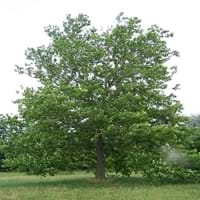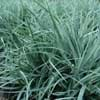Life Span
Annual
Perennial
Origin
South Africa
North America, Canada
Types
Shasta Daisy
Gloriosa Daisies
Painted Daisy
Pyrethrum Daisies
North American sycamore, Middle Eastern sycamore ,The British sycamore
Habitat
gardens, Grassland
bottomlands, Floodplains, Moist woods, Mountains
USDA Hardiness Zone
10-11
5-9
Sunset Zone
8, 9, 12, 13, 14, 15, 16, 17, 18, 19, 20, 21, 22, 23, 24
1a, 1b, 2a, 2b, 3a, 3b, 4, 5, 6, 7, 8, 9, 10, 11, 12, 13, 14, 15, 16, 17, 18, 19, 20, 21, 22, 23, 24
Habit
Clump-Forming
Upright/Erect
Flower Color
White, Yellow, Blue, Purple, Orange, Pink, Magenta
Orange Red, Dark Salmon
Flower Color Modifier
Bicolor
Bicolor
Fruit Color
Not Available
Tan, Sandy Brown
Leaf Color in Spring
Green, Blue Green
Green, Light Green
Leaf Color in Summer
Green, Blue Green
Green, Dark Green
Leaf Color in Fall
Green, Blue Green
Gold, Tan
Leaf Color in Winter
Light Green
Not Available
Leaf Shape
Arrowhead
Orbicular
Plant Season
Spring, Summer, Fall
Spring, Summer, Fall, Winter
Sunlight
Full Sun
Full Sun
Growth Rate
Fast
Not Available
Type of Soil
Loam
Clay, Loam, Sand
The pH of Soil
Neutral
Acidic, Neutral
Soil Drainage
Well drained
Average
Bloom Time
Late Spring, Early Summer, Summer, Late Summer, Early Fall, Fall
Spring
Tolerances
Drought
Wet Site, Pollution, Salt, Soil Compaction
Where to Plant?
Ground, Pot
Ground
How to Plant?
Seedlings, Stem Planting
Seedlings
Plant Maintenance
Medium
Medium
Watering Requirements
Allow soil to be completely dry in between waterings, It cannot sustain wet-feet, Keep the ground moist but not water-logged, Water in morning to avoid prompting diseases, Water twice a day in the initial period
Needs more water during establishment, Needs Very high moisture
In Summer
Lots of watering
Lots of watering
In Spring
Moderate
Moderate
In Winter
Average Water
Average Water
Soil pH
Neutral
Acidic, Neutral
Soil Type
Loam
Clay, Loam, Sand
Soil Drainage Capacity
Well drained
Average
Sun Exposure
Full Sun
Full Sun
Pruning
Cut or pinch the stems, Prune regularly, Remove deadheads
Remove damaged leaves, Remove dead branches, Remove dead leaves
Fertilizers
All-Purpose Liquid Fertilizer
All-Purpose Liquid Fertilizer
Pests and Diseases
Red blotch
Anthracnose, Canker, Leaf spot, Powdery mildew
Plant Tolerance
Drought
Pollution, Salt, Soil Compaction, Wet Site
Flowers
Yes
Insignificant
Flower Petal Number
Single
Single
Foliage Texture
Medium
Coarse
Foliage Sheen
Not Available
Matte
Attracts
Bees, Butterflies
Birds, Not Available
Allergy
Not Available
breathing problems, Skin irritation
Aesthetic Uses
Beautification, Bouquets, Showy Purposes
Landscape Designing, Mixed Border, Showy Purposes
Beauty Benefits
Not Available
Not Available
Environmental Uses
Air purification
Air purification, Food for animals, Food for birds, Nesting sites for birds, Prevent Soil Erosion, Shadow Tree
Medicinal Uses
Cold, Cough, Stomach pain
Not Available
Part of Plant Used
Flowers
Bark, Flowers, Fruits, Sap
Other Uses
Showy Purposes, Used as Ornamental plant
Animal Feed, Application in Furniture, Shelterbelt, Tea-like beverage can be brewed
Used As Indoor Plant
Yes
Insignificant
Used As Outdoor Plant
Yes
Yes
Garden Design
Bedding Plant, Container, Cutflower, Foundation, Groundcover, Hanging Basket, Mixed Border, Rock Garden, Wall
Feature Plant, Landscape, Mixed Border, Shade Trees, Street Trees
Botanical Name
OSTEOSPERMUM
PLATANUS occidentalis
Common Name
African daisy or Blue-eyed Daisy
American Planetree, American Sycamore, Eastern Sycamore, Buttonwood or Buttonball Tree
In Hindi
अफ्रीकी डेज़ी
अमेरिकी गूलर
In German
African Daisy
Amerikanische Platane
In French
marguerite africaine
Platanus occidentalis
In Spanish
margarita africana
Platanus occidentalis
In Greek
Αφρικανική μαργαρίτα
Platanus occidentalis
In Portuguese
africano margarida
Platanus occidentalis
In Polish
Gerbery
Platan zachodni
In Latin
African primula
Platanus orientalis
Phylum
Anthophyta
Magnoliophyta
Class
Magnoliopsida
Magnoliopsida
Order
Asterales
Scrophulariales
Family
Asteraceae
Platanaceae
Genus
Osteospermum
Platanus
Clade
Angiosperms, Asterids, Eudicots
Angiosperms, Eudicots
Tribe
Calenduleae
Not Available
Subfamily
Asteroideae
Not Available
Number of Species
Not Available
Importance of African Daisy and American Sycamore
Want to have the most appropriate plant for your garden? You might want to know the importance of African Daisy and American Sycamore. Basically, these two plants vary in many aspects. Compare African Daisy and American Sycamore as they differ in many characteristics such as their life, care, benefits, facts, etc. Every gardener must at least have the slightest clue about the plants he wants to plant in his garden. Compare their benefits, which differ in many ways like facts and uses. The medicinal use of African Daisy is Cold, Cough and Stomach pain whereas of American Sycamore is Not Available. African Daisy has beauty benefits as follows: Not Available while American Sycamore has beauty benefits as follows: Not Available.
Compare Facts of African Daisy vs American Sycamore
How to choose the best garden plant for your garden depending upon its facts? Here garden plant comparison will help you to solve this query. Compare the facts of African Daisy vs American Sycamore and know which one to choose. As garden plants have benefits and other uses, allergy is also a major drawback of plants for some people. Allergic reactions of African Daisy are Not Available whereas of American Sycamore have breathing problems and Skin irritation respectively. Having a fruit bearing plant in your garden can be a plus point of your garden. African Daisy has no showy fruits and American Sycamore has showy fruits. Also African Daisy is flowering and American Sycamore is not flowering . You can compare African Daisy and American Sycamore facts and facts of other plants too.





